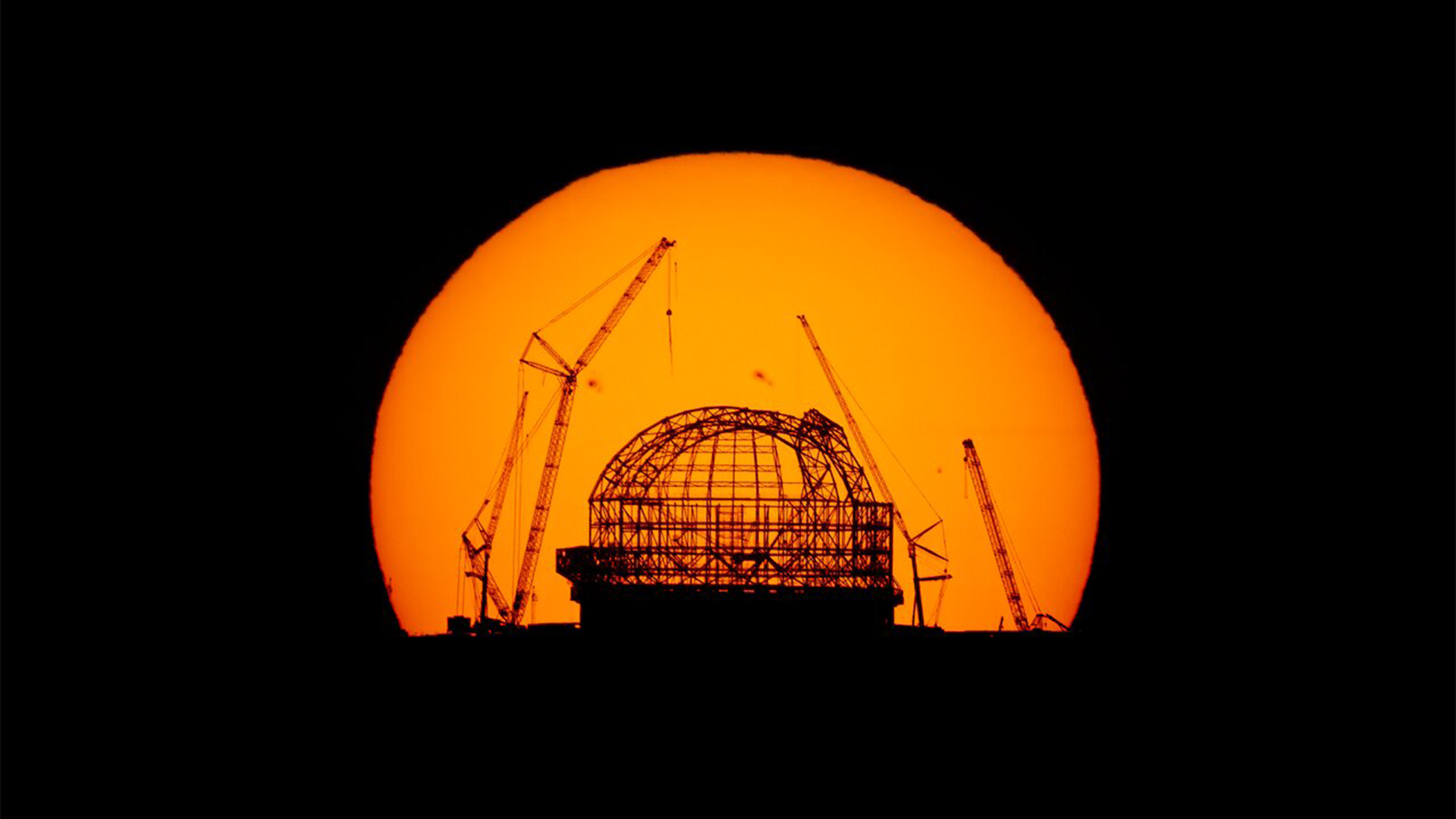Space photo of the week: Gargantuan sunspots photobomb the world's largest telescope
Two planet-sized sunspots peer out from behind what will be the world's largest telescope, currently being built on a mountaintop in Chile.

What it is: The Extremely Large Telescope, which will be the world's largest telescope when it begins operations in 2028
When it was taken: Aug. 28, 2023, and published Sept. 4, 2023
Where it is: At the peak of Cerro Armazones, at an altitude of 9,850 feet (3,000 meters), in Chile's Atacama Desert
Why it's so special: This stunning image of a sunrise behind a construction site not only highlights one of humanity's next great ground-based telescopes but also reveals how active the sun is right now.
In front of the sun's disk is the framework of the 262-foot-tall (80 m) steel dome of the $1.56 billion (1.45 billion euros) Extremely Large Telescope (ELT), which is currently being built by the European Southern Observatory (ESO).
The telescope will be perched atop Cerro Armazones, a mountain in Chile's Atacama Desert, far above the thickest part of Earth's atmosphere, where it will get much clearer views of the night sky. The Atacama is also one of the driest places on Earth, with some parts experiencing annual rainfall of less than 0.2 inch (5 millimeters), according to the National Oceanic and Atmospheric Administration. Cerro Armazones has about 320 clear nights per year and zero light pollution, according to ESO.
When completed, the ELT — which you can watch being built — will have a 127-foot-diameter (39 me) mirror; for comparison, the diameter of the James Webb Space Telescope's mirror is 21.7 feet (6.6 m). The ELT's mighty mirror will eventually rotate 360 degrees on 36 stationary trolleys and weigh about 6,700 tons (6,100 metric tons). The giant telescope will allow astronomers to find Earth-like planets around other stars in the habitable zones where life could exist, probe dark matter and dark energy, study black holes, and see the very first galaxies back to just 380,000 years after the Big Bang.
Sign up for the Live Science daily newsletter now
Get the world’s most fascinating discoveries delivered straight to your inbox.
In July, ESO announced that the ELT was half-built. It's due for "first light" in 2028, according to ESO.
If you look carefully at the sun in the image, you'll see small (yet actually planet-size) sunspots on its surface. Sunspots are darker clumps of intense magnetic field that well up from deep within the sun and frequently produce violent solar flares. It's thought that sunspots will continue to increase as the sun nears solar maximum, which could arrive as soon as the end of this year.
The image and an accompanying time lapse of the sunrise were shot by ESO instrumentation engineer Eduardo Garcés from 14 miles (23 kilometers) away on the peak of Cerro Paranal, where ESO's Very Large Telescope has been examining the night sky since 1998.

Jamie Carter is a freelance journalist and regular Live Science contributor based in Cardiff, U.K. He is the author of A Stargazing Program For Beginners and lectures on astronomy and the natural world. Jamie regularly writes for Space.com, TechRadar.com, Forbes Science, BBC Wildlife magazine and Scientific American, and many others. He edits WhenIsTheNextEclipse.com.










